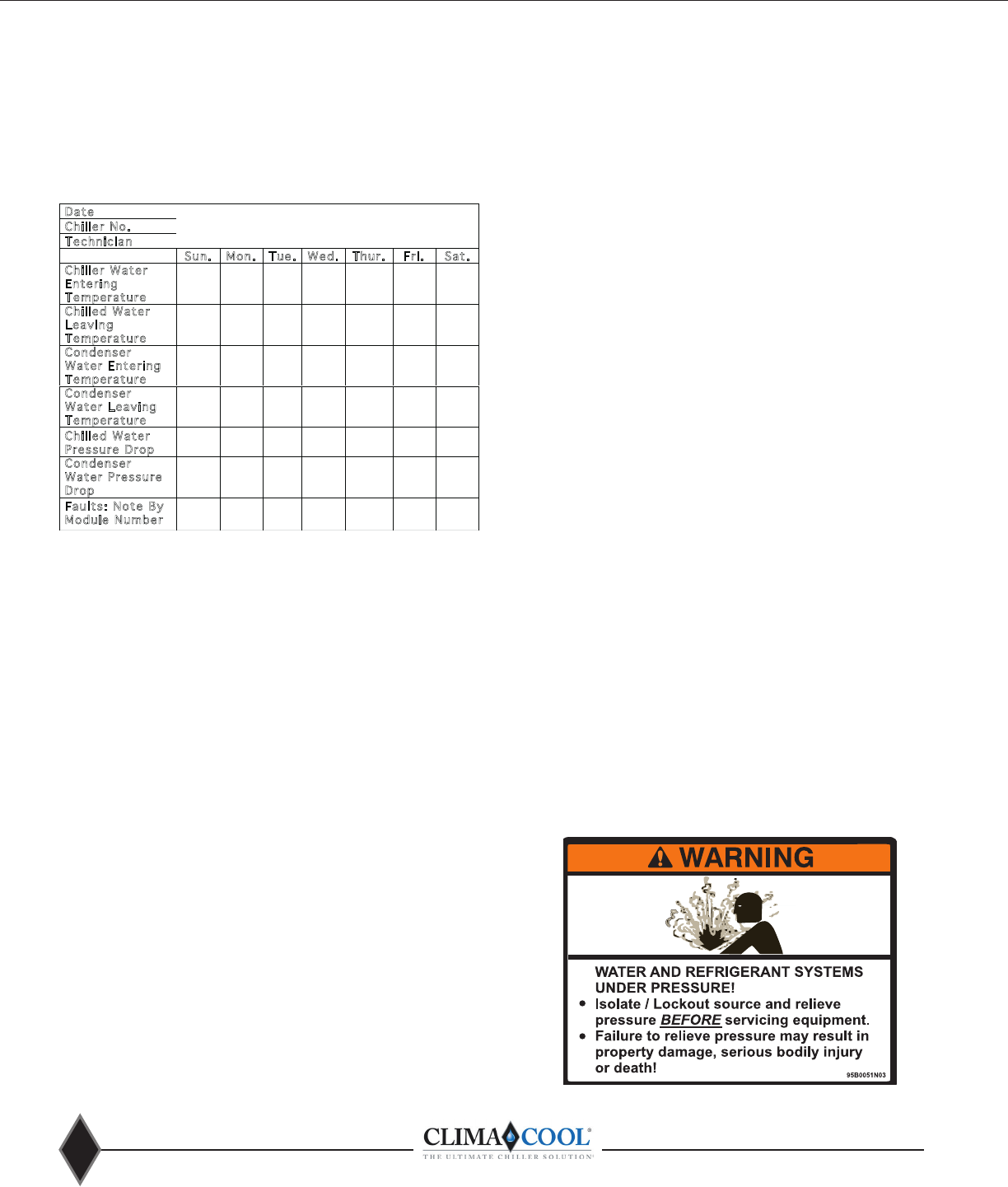Manual

www.climacoolcorp.com
42
Chiller Operation and Maintenance
Pressure and Temperature Log
A log of temperatures and pressures should be taken
regularly. Periodically conduct a visual inspection of the
chiller to identify problems before they reach the point of
failure. As with any mechanical system, it is necessary to
of the chiller.
Maintaining a Daily Log
Date
Chiller No.
Technician
Sun. Mon. Tue. Wed. Thur. Fri. Sat.
Chiller Water
E
ntering
T
emperature
Chilled Water
L
eaving
T
emperature
Condenser
W
ater Entering
T
emperature
Condenser
W
ater Leaving
T
emperature
Chilled Water
P
ressure Drop
Condenser
W
ater Pressure
D
rop
Faults: Note By
M
odule Number
Daily
• A daily operational log should be kept.
• Perform visual inspection.
• Record entering and leaving chiller water and
condenser water temperatures and pressures.
• Properly document all data taken.
• Note any problems that may exist and
immediately plan for further investigation. If
repair is necessary, schedule for the earliest
possible date.
Weekly
• Review daily log from previous week.
• Perform visual inspection.
• Properly document all data taken.
• Note any problems that may exist and immediately
plan for further investigation. If repair is necessary,
schedule for the earliest possible date.
Quarterly
• Check Master Control Panel operating parameters
and set points.
• Check temperature drop/rise on each individual
heat exchanger. *
• Check compressor oil level.
• Check compressor oil color.
evaporator and condenser heat exchangers.
• Properly document all data taken.
• Check all electrical connections for tightness.
compressors) heat exchanger is generally 10°F. If only one
compressor is running, the temperature drop/rise will be
approximately 5°F. Some projects are designed to have a
higher or lower temperature drop on either the evaporator
or the condenser depending on application. Consult the
these values. If the temperature drop/rise is greater than the
the strainer may need to be cleaned.
Annual
43 – Chemical Clean In Place Washing).
• Remove and clean all waterside strainers.
• Manually operate all waterside isolation valves,
if provided, on each module.
• Check all electrical connections for tightness.
• Perform leak check on all refrigerant circuits.
• Check all header piping couplings for tightness.
• Check oil level and color on each compressor.
• Check and test all refrigerant safeties for
proper operation.
• Check all peripheral systems for proper operation.
• Check and test CoolLogic Control System.
• Verify set points, sensors and general control
• Properly document all data taken.










